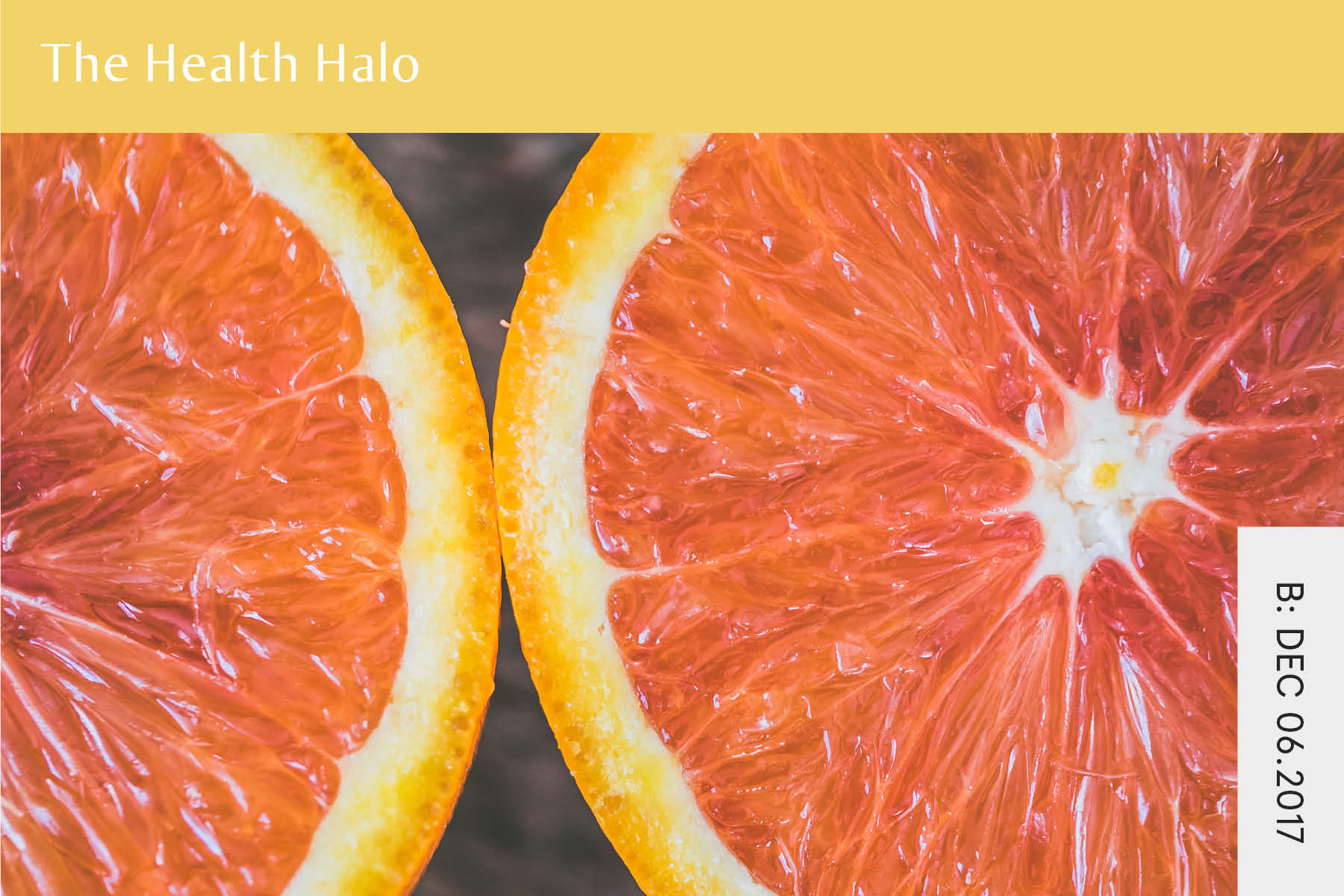

In the past I’ve written about a type of bias we have called the halo effect. If a person possess a single positive attribute, like they’re good looking, we’ll automatically believe that they possess other positive attributes, like they’re smart, funny, good with money, etc.
This halo effect doesn’t just relate to people, it also relates to food. Our ability to evaluate a food can easily be derailed by some simple buzzwords.
For example, if a food is labelled as “low-fat” or “fat-free”, people will typically underestimate the calories in it. It may have the same number of calories as the normal version (or even more), but the “low-fat” or “fat-free” moniker makes people think otherwise.
The same effect happens with words like “organic,” “gluten-free,” and “natural”. Regardless of the food, if the packaging contains these words, people typically think they’re healthier and lower in calories than they are.
A lot of the research around the health halo has focused on people’s underestimating of calories. Because they think the food has less calories than it really does, they end up serving themselves a bigger portion and eating more than if they’d just bought the version without the PR words attached.
For a lot of people, the idea of counting calories is passé. They have their own way of keeping on the straight and narrow with eating. They are “paleo” or “eat clean” or identify with some other label.
But just thinking that a food is “healthy” can increase how much someone consumes of it. Or because they choose the “healthy” lunch, they are now entitled to or “deserve” a dessert.
Even without the thought of calories crossing their mind, the perception of the “healthfulness” of a food or meal alters how much someone consumes.
Now this isn’t to say that people shouldn’t eat healthy food, but it’s how they think about this healthy food that probably makes the difference.
This makes me think of some research that was done on exercise. When people exercise and they think of it as fun and enjoyable, they naturally eat less afterwards. But if they perceive the exercise as just exercise (without the fun element), they naturally eat more afterwards.
I think the same happens on the food front. If someone eats something healthy for the sake of it being healthy, they’re likely to suffer the repercussions of the health halo, where they consume more. Whereas if what they’re eating is something that they truly enjoy, the fact that it’s “healthy” doesn’t have this effect.
When I’m working with clients, I’ll often get them to mark down their level of hunger and fullness. Before a meal, how hungry were they? And then after the meal, how full did they feel?
Once they’re starting to pay attention to this, I then get them to focus on food satisfaction. How satisfied are they with the meal or snack? How well did it hit the spot?
It’s important to differentiate between fullness and satisfaction. Because you can eat a whole plate of steamed broccoli to the point of being completely full, but actually get very little satisfaction out of the food.
And for me, this is another way the health halo can impact consumption.
Say you’re craving something sweet, so you eat a “healthy” brownie (it’s gluten-free, sugar-free, GMO-free, etc.) that actually isn’t as nice as a regular brownie. Because it’s not so satisfying, it never really hits the spot. So in a short time you find yourself still craving something sweet because that original itch wasn’t scratched.
The supposed “healthfulness” of a food can push people towards making choices that aren’t actually what they feel like. And while they’ll rationalise that this “healthy” choice will fill them up, it doesn’t do nearly as good a job as if they enjoyed it.
We need to be aware of the irrationality of the human mind and human behaviour. Because simple buzzwords can make a mess of our judgment. But so can our best intentions, when we try to listen to our head instead of our body.
So the next time you find yourself reaching for something you consider “healthy,” whether that be a brownie, a low-fat yoghurt or big plate of salad, ask yourself why you’re really eating it. Because unless it’s what you truly want, you could find this “healthy” choice actually backfires.
I’m a leading expert and advocate for full recovery. I’ve been working with clients for over 15 years and understand what needs to happen to recover.
I truly believe that you can reach a place where the eating disorder is a thing of the past and I want to help you get there. If you want to fully recover and drastically increase the quality of your life, I’d love to help.
Want to get a FREE online course created specifically for those wanting full recovery? Discover the first 5 steps to take in your eating disorder recovery. This course shows you how to take action and the exact step-by-step process. To get instant access, click the button below.
Discover the First 5 Steps To Take In Your Eating Disorder Recovery
Get started the right way and be on the path to full recovery and the freedom it will bring YOU.
Unlike other approaches focusing on just one aspect of recovery, this course shares a framework that demonstrates what full recovery is really about and gives you the tools to get there.
Get Instant Access!
Share
Facebook
Twitter